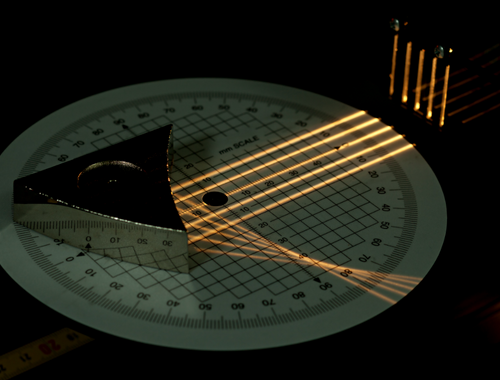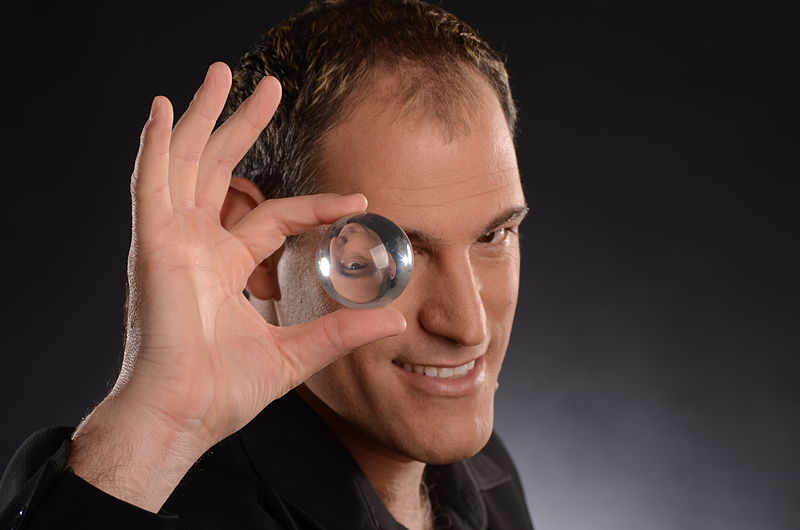Mirrors come in different shapes and sizes, each with its own unique properties. However, people use concave and convex mirrors widely due to their unique reflective properties.
Let’s explore the similarities between concave and convex mirrors, including their shape, reflection properties, and real-life applications.

What is a Concave Mirror?
A concave mirror is a mirror that curves inward, similar to a spoon or a bowl. The reflective surface of a concave mirror is on the inside of the curve, which causes light rays to converge when they reflect off the surface. This type of mirror is also a converging mirror because it brings light rays together at a focal point. The focal point is where the reflected light rays intersect and are located halfway between the mirror’s center and surface.

What is a Convex Mirror?
A convex mirror, also known as a diverging mirror, is a type of mirror that curves outward, similar to the shape of a spoon with the backside facing outward. Unlike a concave mirror, a convex mirror diverges light rays, causing them to spread out. The reflective surface of a convex mirror is on the outside of the curve, which makes the reflected image appear smaller than the actual object.
Similarities between Concave and Convex Mirror
Despite their differences in shape and reflective properties, concave and convex mirrors share several similarities. For example, both mirrors can reflect light and create an image of an object. They also follow the same laws of reflection, which dictate that the angle of incidence of a light ray is equal to the angle of reflection.
Moreover, both concave and convex mirrors have a focal point, which is the point at which the reflected light rays intersect. Additionally, both mirrors have a virtual image, which is an image that appears to be behind the mirror and is not a real physical object.
Differences between Concave and Convex Mirror
While concave and convex mirrors have several similarities, they differ in shape, reflective properties, and real-life applications.
The most noticeable difference between the two is their shape, with a concave mirror curving inward and a convex mirror curving outward. It gives rise to their different reflective properties: a concave mirror converges light rays, and a convex mirror diverges light rays.
Additionally, their focal points differ, with a concave mirror having a real focal point and a convex mirror having a virtual focal point.
In real-life applications, you may use concave mirrors in optical instruments like telescopes and reflectors. In contrast, convex mirrors require a wide field of view, such as security mirrors and side-view mirrors on vehicles.
Summary
- People use concave and convex mirrors due to their reflective properties.
- Concave mirrors curve inward, causing light rays to converge and have a real focal point.
- Convex mirrors curve outward, causing light rays to diverge and have a virtual focal point.
- Both mirrors can reflect light and follow the laws of reflection, with a virtual image appearing behind them.
- Concave mirrors are used in telescopes, headlights, and dental mirrors, while convex mirrors can be useful in vehicles’ security and side-view mirrors.
- Understanding the differences and similarities between concave and convex mirrors is crucial for knowing when to use each type and how to maximize their unique properties.
FAQs
What are the differences between concave and convex mirrors?
The main differences between concave and convex mirrors lie in their shape and reflective properties. Concave mirrors curve inward and converge light rays, while convex mirrors curve outward and diverge light rays. They also have different focal points and are used for other applications.
How are concave and convex the same?
Despite their differences, concave and convex mirrors share several similarities. You can use both mirrors to reflect light and create an image of an object. They also follow the same laws of reflection, have a focal point, and produce virtual images. These similarities demonstrate that both mirrors have fundamental characteristics that make them useful in various applications.
What are the similarities between the images formed by convex and concave lenses?
The similarities between the images formed by convex and concave lenses include that both lenses can create real or virtual images, depending on the object’s position relative to the lens. Both lenses also follow the same laws of reflection, and the size and orientation of the images formed by the lenses can be determined using similar mathematical equations.
What are the 2 differences between a convex and concave lens?
Two differences between convex and concave lenses are their shape and how they refract light. Convex lenses are thicker at the center and taper towards the edges, whereas concave lenses are thicker at the edges and thinner at the center. This result in different optical properties. Convex lenses converge light rays towards a focal point, while concave lenses cause light rays to diverge away from the focal point.
Why do convex and concave mirrors have different uses?
Convex and concave mirrors have different uses due to their different reflective properties. Concave mirrors can be useful in applications that require converging light rays, such as telescopes and headlights. On the other hand, convex mirrors are useful in applications that require a wide field of view, such as security mirrors and side-view mirrors on vehicles.
What are two common uses for convex mirrors?
Two common uses for convex mirrors include side-view mirrors on vehicles and security mirrors in retail stores. Convex mirrors provide a wider field of view than flat mirrors, making them useful for monitoring large areas. They are also often used outdoors to increase visibility and prevent collisions.











Leave a Reply